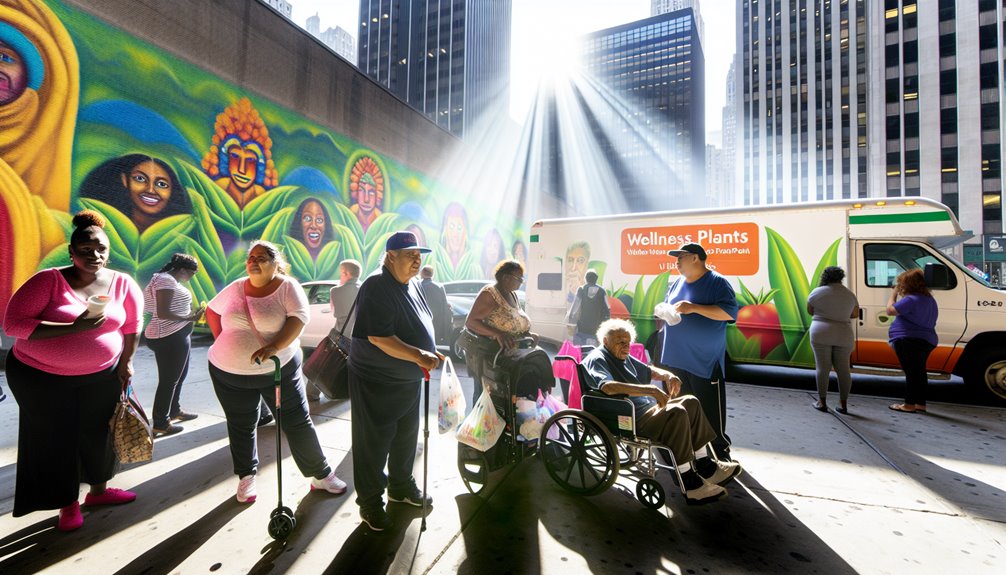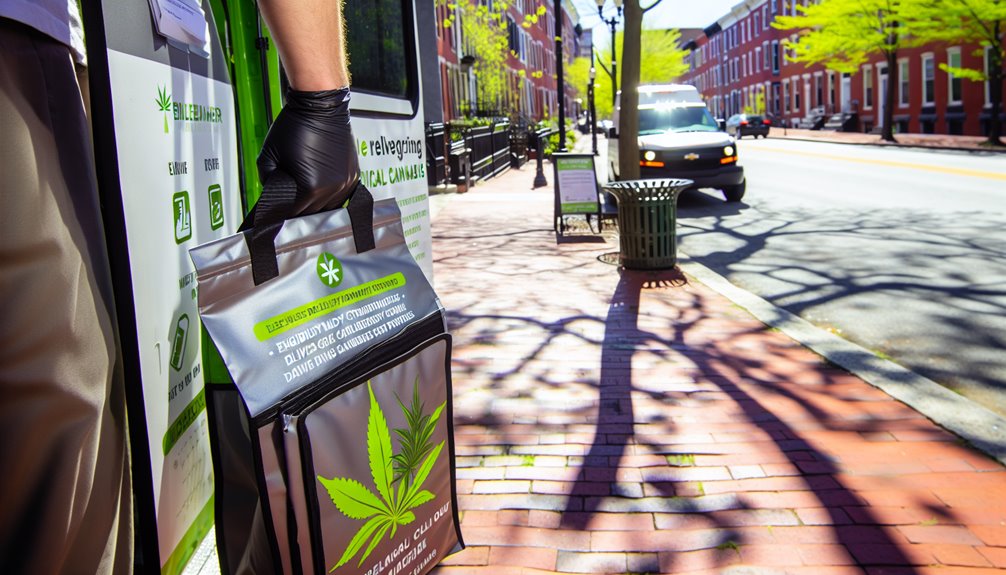With Baltimore extending medical cannabis delivery through 2026, you gain time to stabilize operations while regulators finalize permanent rules. Expect continuity for homebound and transit-poor patients, but growth will hinge on faster permits, clearer SLAs, and tighter ID, safety, and chain-of-custody protocols. Costs, insurance, and staffing constraints still slow scale. Data on on-time rates, adverse events, and coverage gaps will shape standards—and your strategy—next. The question is whether you’ll use this window or waste it.
The 2026 Extension: What Changed and Why It Matters

Although the headline suggests continuity, the key change is a formal policy extension that keeps Baltimore’s medical cannabis delivery pilots authorized through 2026, preserving patient access while regulators finalize permanent rules. You can plan with clearer policy timelines, align budgets, and benchmark outcomes against 2024–2026 targets. The extension stabilizes service for homebound patients, supports equity operators, and enables data collection on delivery reliability, safety, and patient satisfaction. You should prioritize community outreach to validate patient needs, track on-time rates, and monitor adverse events. By 2026, evidence on utilization, cost per delivery, and geographic coverage can inform durable standards and procurement decisions.
Mapping the Bottlenecks: Permits, Compliance, and Operational Hurdles
With the 2026 extension in place, the focus shifts to the chokepoints that will determine whether delivery performance meets the 2024–2026 targets: permitting backlogs, compliance complexity, and daily operations. You can clear bottlenecks by aligning approvals, documenting controls, and standardizing execution.
1) Permits: Track cycle times by agency, publish SLAs, and pre-file to cut zoning delays. Pair fast-track reviews with community outreach to reduce appeals.
2) Compliance: Map state/local rules to auditable SOPs. Automate ID checks, manifests, GPS trails, and chain-of-custody logs.
3) Operations: Optimize routes, staffing, and inventory buffers. Use data dashboards and incident postmortems to prevent repeat failures.
Patient Access Realities: Transportation, Mobility, and Equity Gaps

Look past topline delivery counts and you’ll see access hinges on who can actually receive an order: patients without cars, those with limited mobility, seniors on fixed incomes, and residents in transit-poor neighborhoods. You serve these patients best by quantifying transport barriers—travel time to dispensaries, paratransit wait windows, and delivery coverage deserts. Use equity mapping to overlay income, disability prevalence, age density, and transit frequency with active delivery zones. Then prioritize outreach and service hours where gaps are largest. Subsidize delivery fees for low-income patients, set ADA-friendly delivery protocols, partner with senior centers, and pilot multi-stop routes to reduce per-order costs.
Regulatory Landscape: MMCC/MCA Guidance and Local Enforcement Dynamics
Even as delivery authority extends through 2026, your compliance posture depends on how Maryland’s Cannabis Administration (MCA, successor to MMCC) interprets statute and how Baltimore enforces it on the ground. You’ll navigate guidance ambiguity and enforcement variability by aligning documentation, audit trails, and reporting with MCA bulletins and local directives. Prioritize measurable controls that protect patients and communities.
1) Track rule changes: map MCA notices to SOP updates within 48 hours, log versioning, and verify against license conditions.
2) Standardize records: reconcile manifests, ID checks, and geotags daily; retain for statutory periods.
3) Engage officials: attend briefings, request written clarifications, and benchmark citations to reduce variance.
Staffing and Safety: Hiring, Training, and Secure Transport Requirements

Although delivery authority now runs through 2026, you’ll need a staffing and safety program that meets MCA rules on personnel vetting, training, and secure transport to keep your license defensible. Implement rigorous driver vetting with background checks, MVR reviews, and documented competency assessments. Standardize onboarding and annual refreshers covering diversion prevention, chain-of-custody, secure packaging, incident reporting, and de-escalation. Run quarterly emergency drills with after-action reviews. Enforce uniform policies for ID display, body-worn communication, and route confidentiality. Use dual-locked vehicle safes, GPS telematics, and two-person protocols for high-value runs. Monitor KPIs: delivery deviations, loss events, training completion, and corrective actions.
Insurance and Cost Structures: Risk, Premiums, and Price Pressures
Your staffing and safety controls directly shape your insurance profile, because underwriters price cannabis delivery risk from hard indicators: driver MVR tiers, loss runs, telematics data, cash-on-hand protocols, and documented training hours. Higher-risk signals raise insurance premiums and amplify price volatility, especially when claims frequency spikes or cash handling lacks dual-control.
1) Benchmark loss ratios quarterly; negotiate deductibles that align with capital reserves and mission continuity.
2) Tighten driver eligibility and require remedial training after near-misses; document corrective actions for renewals.
3) Diversify carriers or layered limits to reduce concentration risk and shield margins.
Tie savings to patient access commitments and reinvest in safety.
Technology and Logistics: Routing, Verification, and Data Security

While Baltimore’s extension to 2026 stabilizes delivery operations, technology choices now determine compliance, unit economics, and patient trust. You’ll need route optimization that reduces miles per delivery, meets time-window constraints, and geofences sensitive zones. Use age/ID verification with multi-factor checks at handoff, tying manifests to seed-to-sale data. Encrypt PHI and purchase data at rest and in transit; log access with least-privilege controls. Evaluate driverless vehicles only where regulations, teleoperations, and incident reporting align. Implement blockchain tracking for tamper-evident chain-of-custody, but benchmark latency and cost. Continuously audit telemetry, exception alerts, and retention policies to satisfy regulators and protect patients.
Action Steps for Dispensaries: Compliance Checklists and Scalable Workflows
Because Baltimore’s delivery authorization now runs through 2026, you should convert regulatory requirements into a repeatable operating plan: map each Maryland Cannabis Administration rule to a control, owner, and evidence artifact; institute a pre-dispatch checklist (license validity, patient/caregiver eligibility, order limits, product manifests tied to seed-to-sale), an in-transit protocol (GPS geofence compliance, secure storage, real-time exception alerts, incident reporting within mandated timeframes), and a post-delivery review (ID/age verification logs, payment reconciliation, audit trail closure).
1) Standardize SOPs with role-based training, quarterly inventory audits, and CAPA logs.
2) Automate customer onboarding, consent capture, and eligibility rechecks.
3) Implement KPI dashboards: on-time rate, exceptions, reconciliation lag, compliance-findings density.
Action Steps for Patients: Eligibility, Ordering, and Safe Delivery Practices

With dispensaries tightening controls through 2026, patients should match that rigor by confirming eligibility and ordering within Maryland Cannabis Administration (MCA) rules. Verify delivery eligibility: active MCA registration, valid government ID, and product within purchase limits. Update your patient profile, including delivery address matching your ID. Order from licensed dispensaries only; confirm inventory, taxes, and fees upfront. Use secure payment methods authorized by the provider. Enable order tracking and require adult signature upon receipt. Inspect sealed packaging, batch labels, and test results; refuse tampered items. Store products per labeling. Report delivery issues to the dispensary and the MCA within stated timelines.
Conclusion
As we look forward to the exciting changes in Baltimore’s cannabis delivery landscape through 2026, I can’t help but feel optimistic about the future of our community. Here at Fells Point Cannabis Docs of Maryland, we’re dedicated to ensuring that you have safe and reliable access to the products you need. Whether it’s understanding the new delivery systems or simply having a chat about your options, we’re here for you. We invite you to visit us in person or give us a call at (410) 401-4200. Let’s work together to make sure you feel supported and informed every step of the way. We can’t wait to see you!
